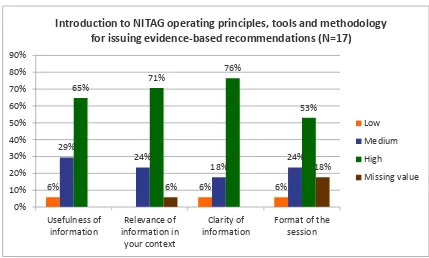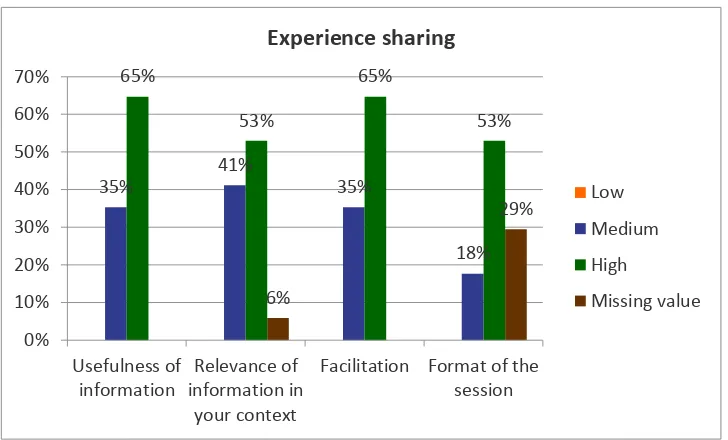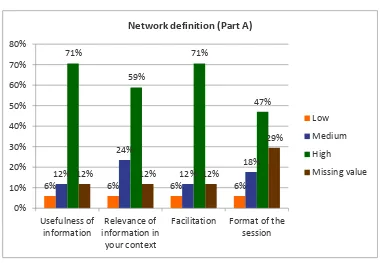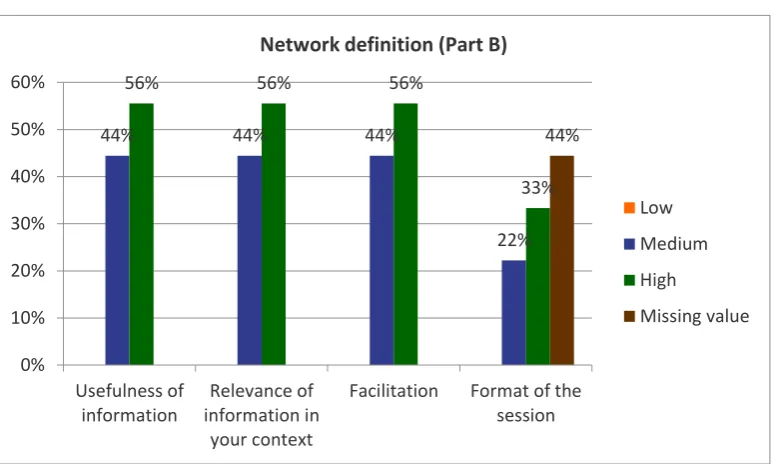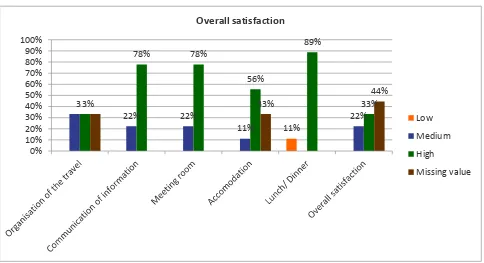Draft Version April 2016
The South
-
East Asia
NITAGs Network
SIVAC Initiative | 2
Acknowledgements
The meeting organisers wish to thank the Sri Lanka Ministry of Health, Nutrition and Indigenous Medicine for having graciously accepted to host the South-East Asia Region National Immunisation Technical Advisory Groups (NITAG) Network consultative workshop. Special thanks to Dr. Palitha Gunarathna Mahipala Director General of Health Services and chair of the Advisory Committee on Communicable Diseases for his support and personal involvement in the organisation of the consultation.
The outcomes of the meeting would not have been achieved without the active participation and enthusiasm of the NITAGs representatives.
S O U T H - E A S T A S I A R E G I O N N I T A G N E T W O R K C O N S U L T A T I V E W O R K S H O P A M P H P I D
SIVAC Initiative | 3
Executive Summary
The South-East Asia Region NITAG network consultative workshop was organized to respond to a need expressed by the region NITAG at a side meeting during the 2015 Regional Immunisation Technical Advisory Group (ITAG) meeting.
The aim was to initiate the formalisation of a NITAG network in the South East Asian Region
The meeting took place in Colombo, Sri-Lanka on April 7-8, 2016. Out of the 11 countries in the region 8 country representatives were able to attend (Bhutan, Nepal, Indonesia, Maldives, Timor-Leste, Thailand, India and Sri Lanka),. Dr. Sanath P. Lamabadusuriya, Emeritus Professor of Paediatrics, University of Colombo, Visiting Professor of Paediatrics, University of Rajarata and member of the SEAR ITAG chaired the meeting. Dr Nihal Abeysinghe, WHO SEAR advisor on VPD provided technical assistance. (Agenda of the meeting and list of participants are in Annex 1 and 2)
A short talk was delivered on NITAG operating principles, tools and methodology for issuing evidence-based recommendations.
Participants shared experience on their respective NITAG structure and functioning, on their challenges and solutions to overcome them. Group work and plenary sessions led to the definition of the network. Participants first expressed their needs and expectations regarding the network which helped then setting the network’s objectives. Besides, the meeting did not only enable to identify remaining gaps for each NITAG’s efficient and effective functioning but it also helped define the network’s terms of reference, structure based on memberships, coordination, members’ responsibilities, required materials and tools, funding (sources and items) and short/medium/long-term activities for the network.
A concept note was drafted based on the working groups’ agreed upon outputs. It will serve as the Network strategic document and will be presented at the upcoming South East Asia Regional Immunisation Technical Advisory Group meeting, in June 2016 in New Delhi.
SIVAC Initiative | 4
1. Introduction
At a side meeting of the NITAG Chairs and secretariats held during the annual SEAR ITAG meeting in June 2015 to share experiences and discuss the current needs for support from WHO and SIVAC to strengthen the committees, all countries expressed interest in the establishment of a regional NITAG network. Participants felt that regular opportunities to share experiences and exchange information will enhance the technical capacities of all NITAGs - both the experienced ones, as well as the recently established ones. In particular, the side meeting participants noted that a regional NITAG network can constitute an appropriate platform for regional data sharing and consultation on regional immunisation issues.
It is against this background that a 2-day consultation with the SEAR NITAG Chairs and Secretariats was organized in Colombo from 7-8 April, 2016, to define the terms of reference of such a network. The meeting was hosted by the Sri Lanka Advisory Committee on Communicable Disease (ACCD). The SIVAC Initiative of the Health Policy and Institutional (HPID) Center led the organisation of the consultative workshop with technical assistance from WHO SEARO.
1.1. Objectives of the workshop
The general objectives of the workshop were:To develop a draft charter of a SEAR NITAG network To identify needs for NITAGs strengthening
The specific objectives of the workshop were:
To review key principles of optimal NITAG functioning and the methodologies for issuing evidence-based recommendations.
To share experiences of NITAG establishment and functioning. To define mandate and terms of reference of a SEAR NITAG network.
1.2. Participants
All SEAR NITAGs accepted the invitation to participate in the consultation. At the end, 8 countries out of the 11 from the SEA Region were represented. (Bangladesh representative had last minute constraints; Myanmar participants missed their connecting flight in Bangkok; DPKR did not attend as translation facilities could not be organized for the delegates).
There were 17 participants (NITAG chairs/chair representatives and secretariats) from Bhutan, India, Indonesia, Maldives, Nepal, Sri Lanka, Thailand and Timor-Leste.
S O U T H - E A S T A S I A R E G I O N N I T A G N E T W O R K C O N S U L T A T I V E W O R K S H O P A M P H P I D
SIVAC Initiative | 5
2. Roll-out of the training
The training was a 2-day residential workshop.
Facilitators used group work sessions and plenary discussions to achieve the workshop objectives. The training was divided into 4 sessions as detailed below.
2.1. Session 1: Introduction to the meeting
In his opening remarks, Dr Mahipala, host of the consultation, highlighted that SEA countries share a common culture and heritage which makes it natural to envision the creation of a platform for discussing health care services. He indicated that although most countries in the region are achieving 100% immunisation coverage, there is a need to address any quality issue. A network will provide the opportunity to learn from each other in order to march forward improving immunisation.
2.2. Session 2 Introduction to NITAG operating
principles, tools and methodology for issuing
evidence-based recommendations
The aim of this session was to orient participants on NITAG functioning as per WHO guidelines and on tools and methodology for issuing evidence-based recommendations. The presentation touched on developing standard operating procedures, multi-year work planning, conflict of interest management policy, on monitoring and evaluating the NITAG and on the methodology used for issuing evidence based recommendations.
Participants were able to understand:
The value of elaborating the details of the mode of operation which includes set-up and functioning of working groups
The importance of a work plan in helping the committee contribute to the country’s immunisation strategy
The criteria to assess NITAG functionality
The methodology used in the process of issuing an evidence-based recommendation Key points raised during the plenary discussions were:
The impact of increased visibility of a NITAG in its country and its benefit on the NIP: increased visibility might mean losing independence/ being pressured by external lobbies when issuing recommendation.
SIVAC Initiative | 6
Non-core members can attend meetings and make presentations to enrich NITAG discussions and overview of a particular topic. Everything should be put in place so that independence in decision-making is preserved.
Anti-vaccine lobbies are becoming more visible in India. This could prompt NITAG to look at every aspect of vaccination, particularly at quality safety/ AEFI surveillance data. It would be good to include this in the decision-making framework and anticipate on problems that are commonplace in Europe regarding vaccine hesitancy groups.
Figure 1 shows participants’ rating of session 2 regarding the usefulness of information provided, the relevance of information in respective context, the clarity of information and the format of the session.
Overall, majority of participants were interested in this session. Some participants expected a more in-depth presentation and hard copies of key available tools and procedural documents, while others thought the session was too elaborate. This reflects the fact that NITAG experience in the region is very heterogeneous from country to country. Some representatives of less experienced NITAG (particularly from Timor-Leste and the Maldives) expressed the need for technical support to develop their internal procedures and to improve their work processes.
Facilitators of the meeting realised that this session, meant to be an overview of what HPID can offer in capacity building, generated unmet expectations. If this session remains in the next regional NITAG network workshops, more time should be allocated for presenting existing tools.
Figure 1: Participants’ rating of Session 2: Introduction to NITAG operating principles, tools and methodology for issuing evidence-based recommendations
Total number of respondents is 17 (n=17).
Additional general comments provided after session 2 were:
6% 6% 6%
Introduction to NITAG operating principles, tools and methodology
for issuing evidence-based recommendations (N=17)
Low
Medium
High
S O U T H - E A S T A S I A R E G I O N N I T A G N E T W O R K C O N S U L T A T I V E W O R K S H O P A M P H P I D
SIVAC Initiative | 7
Too much elaboration and time taken. A lot of repetition
Close relevance, due to the organisation of NITAG activities, the topic and the basic principles. Distribute the same to other members in each country.
Introduction to NITAG and guide for strengthening NITAG was found relevant. May be useful to some countries
Would have liked more details on tools and methodologies
The general idea of the meeting is very important to improve the committees Well conducted session
Suggestions for improvement:
I think the process of DM follows all steps. Try to make the session more elaborative, which is needed by many countries. It may not produce the sought outcome at the end of the 2 days meeting for everybody.
Improving the flow of information Adherence to time allocation
This may have been a longer session Hope the materials will be shared
2.3. Session 3: Experience sharing on NITAG
experience and institutional organisation
Session 3 aimed at:
Learning about the structure and functioning of other NITAGs
Understanding challenges faced by other NITAGs and how they have been overcome
To share experience, participants went into 3 working groups. Working groups were determined by the facilitators before the start of the meeting (WG1: Bhutan and Nepal; WG2: Indonesia, Maldives and Timor-Leste; WG3: India, Thailand and Sri Lanka).
Countries shared their experience on the institutional organisation, terms of reference, working methodology used and the overall functioning of each NITAG. Common challenges faced by NITAG and enabling factors for NITAG functioning were also discussed. Rapporteurs of each working group then presented the summary of their discussions in plenary, highlighting i) the Structure and functioning of individual NITAGs; ii) common enabling factors for good functioning and iii) common challenges in operations.
SIVAC Initiative | 8
Figure 2: Participants’ rating on Session 3: Experience sharing
Total number of respondents is 17 (n=17).
Additional general comments on session 3 were:
Relevance of information because every country has a different structure and functioning, that could represent a problem. Clear format of session.
Giving experience sharing from some developed countries would be much helpful Glad to be a participant here, as I can use the good experience from other countries
It was nice to share individual country experience. This format was better than having individual country presentation.
Suggestions for improvement:
Needy countries should be provided with expertise to make NITAG in order.
To improve NITAG activities; experiences have to summarize and formulate the general suggestions and recommendations based on experience sharing
Need training for country with recent NITAG. For example: Timor-Leste Adherence to time allocation
2.4. Session 4: Network definition (Part A)
Session 4 aimed at:
Defining purpose of establishing a regional NITAG network. Defining information that may be shared between NITAGs
After sharing respective NITAG experience, participants focused on identifying needs and expectations from the network as well as identifying common activities and means for each NITAG to contribute to the network. For this activity, participants went to the same working groups as in session 3 and each group presented their findings in the plenary.
WG NEEDS EXPECTATIONS HOW CAN WE CONTRIBUTE TO THE NETWORK?
WHAT DO WE WANT TO DO IN COMMON?
WG1: Bhutan,
Nepal
Capacity building
Strengthen the secretariat
Good understanding of procedures
Knowledge of what others are working on
Identify champions
Mutually beneficial network
Experience sharing
Access to technical resources
Global priorities
Reinforce communication
Need of a strong coordinating agency for the network
Being responsive to communication “clearing house”
Sharing priorities/ work plan/ expertise
Data Sharing
WG2: Indonesia, Maldives, Timor
Leste
Experience sharing
Capacity building
Vaccine procurement
Organise activities/ HE expertise/ evidence based recommendations/ have SoP/ local data sharing
Technical support for health economics
Easy access to local data
Sharing experience and expertise/ attend regional workshops and meetings
Updating NITAG functioning
Access to up to date information
Commitment
SIVAC Initiative | 10 WG3: India, Sri
Lanka, Thailand
Health economics expertise: connection with Indian health economics teams could remove this lack of
expertise elsewhere
Regional Surveillance Data: data sharing,
Experience on Immunisation Programme implementation
Academic research evidence on immunisation and VPD, mostly on vaccine safety; access facilitation;
information sharing
Visit regional NITAG meeting to observe functioning
Information sharing with other NITAG (policy recommendations)
Policy advocacy after NITAG recommendation: the network will
facilitate discussions
Pooled procurement for the region: the network will facilitate discussions
Vaccine safety information sharing on regular basis/ vaccine information
specific by brands
Sharing meeting minutes
National experience with changes of vaccine schedule/ vaccine
formulation used
Sharing results of vaccine clinical trial and disease burden study
within the region
Data sharing at regional level
Experience sharing on vaccination policy and
Participants’ feedbacks on this session were very good with more than 71% of participants finding information provided through this session highly useful in the context of setting a NITAG network (Figure 3). Figure 3: Participants’ rating on Session 4: Network definition (Part A)
Total number of respondents is 17 (n=17).
Additional general comments provided on session 4 (part A) were:
May provide an opportunity to learn, share, strengthen Scope of this session was not very clear
Should we discuss structure? Suggestions for improvement:
There should be a balance between NITAG improvement and the NIP. If more resources are diverted to NITAG, the NIP can get affected. That does not mean NITAG activities should be reduced at the advantage of the EPI programme. There may be various groups working in different aspects of immunisation related issues due to various funding opportunities. But in the long-run, programme managers/ officers will be exhausted trying to do various things accordingly. We all need to find a balance.
Please share the presentations Required more clarity on this
This marked the end of Day 2. Both facilitators and participants were satisfied with the active participation of all members in the working groups and plenary sessions.
SIVAC Initiative | 12
2.5. Session 4: Network definition (Part B)
Session 4 (Part B) aimed at:
Defining broad terms of reference of the regional NITAG network.
Defining the structure of the regional NITAG network, including the body or individuals responsible for organizing consultations and the logistics regarding meeting frequency, locations.
Building on needs and expectations from the network expressed at the previous session as well as suggestions on what network members could do together, participants focused in this session on defining the network terms of reference and structure, the coordination process, members’ responsibilities, required materials and tools, funding sources and deliverables and short, medium and long-term activities for the network. This was first discussed in groups; then, each group rapporteur presented their proposal in plenary. Main issues raised during the discussion focused:
On the mechanism for coordination/ Host institution/ Secretariat
Chair of the network will be responsible for highlighting needs and gaps for a functioning secretariat. WHO and SIVAC can provide some support to human resources of the secretariat
Duration of the chairmanship: the entire process of the rotation cycle for the chair, secretariat and the co-chair will be decided at the next network meeting to be held mid-2017.
On members’ responsibilities:
It was stressed that all should commit to attend to the queries and requests from members in a timely manner, at least within 30 days.
All members will explore possibility for in-country sources of funding for the functioning of the network. Sharing of NITAGs documents (agenda, work plan) was not agreeable to all countries. This aspect will be further discussed.
Materials:
All agreed that an annual network newsletter is a good idea to inform on on-going activities and opportunities in the region.
Having a reliable emailing list of members of the network appeared crucial (detailing name, designation to highlight available capacity and expertise and email information)
Funding: Items and sources
o Countries of the region should take the responsibility for funding activities of the network; WHO cannot provide particular grants, but can provide financial support for named activities. SIVAC can support activities within defined work plans.
o Secretary activities of the network are to be funded by the host country chairing the network. Should each country support secretariat activities?
Activities:
S O U T H - E A S T A S I A R E G I O N N I T A G N E T W O R K C O N S U L T A T I V E W O R K S H O P A M P H P I D
SIVAC Initiative | 13
After discussion and consensus on the above-mentioned points, a concept note on the network was drafted. The document highlights the following aspects:
The rationale which is based on:
Common challenges around availability of technical expertise, financial resources and access to up-to-date information
Common needs in technical aspects (support for literature reviews, access to external experts); in topics for trainings (evidence-based recommendations); in areas to strengthen (secretariat, use of standard operating procedures); in information sharing (disease burden, surveillance data) and in learning from each other
Common expectations that a network could respond to these needs through easy interaction with other NITAG for sharing information & experience, discussion/evaluation of the same recommendations; access to technical resources and regular information sharing on vaccine safety. The mission statement:
Stating the commitment from each network member The mandate which:
Outlines the scope of the network
Refers to the help in progress evaluation of NITAGs effectiveness/ performance and functioning. Structure/organisation of the network describing:
Membership: chairs and secretariats of the 11 countries
Mechanism for coordination/ host institution/ secretariat including duration and rotation of chairmanship
Responsibilities of the chair, secretariat and members of the network Materials for functioning and to produce deliverables
Funding will come from respective governments with partners support in areas such as: o Meetings, trainings, study tours: with additional support from WHO and SIVAC
o Peer-to-peer technical assistance: WHO and SIVAC for travel expenses, expert fees (voluntary) o Secretariat activities: by host country
o Digital space: with support from SIVAC (through the NRC) o External evaluation
Timelines of Activities:
Short term (April 2016- April 2017) will focus on finalising the network documents
Medium term (April 2017- April 2018) will see the start of implementation of activities and organising the next year’s annual meeting
Long-term (April 2018-April 2020) will include the conduct of an independent evaluation of the functioning of the network, a publication documenting the network experience, and plans to link up with other international NITAGs.
SIVAC Initiative | 14
Overall, participants’ feedback on the session was positive.
Figure 4: Participants’ rating of Session 4: Network definition (Part B)
Total number of respondents is 9 (n=9).
Additional general comments provided on session 4 (part B) were:
Issues thoroughly discussed, all members given equal opportunity to share their views
3. Outcomes of the workshop
Following the conclusion of the training, participants:
Had an improved understanding of the NITAG operating principles as per the WHO guidelines and an improved knowledge on tools and methodology for issuing evidence-based recommendations, although it was not the main objective of the workshop. Needs in capacity building have been identified for some NITAGs.
Had a better understanding on each SEAR NITAG structure/institutional organisation and functioning on respective challenges faced and solutions each NITAG used to overcome them.
Agreed upon a concept note formalising the SEAR NITAG network, based on expressed needs and expectations regarding the network. This concept note will be finalised to serve as the network strategic document; it specifies membership rules, coordination process, members’ responsibilities, required materials and tools, deliverables, sources of funding and short/medium/long-term activities for the network.
Network definition (Part B)
Low
Medium
High
S O U T H - E A S T A S I A R E G I O N N I T A G N E T W O R K C O N S U L T A T I V E W O R K S H O P A M P H P I D
SIVAC Initiative | 15
4. Next steps
Description Responsible person Deadline
1 Send feedback to WHO/SIVAC on remaining issues to agree upon on the concept note
All SEAR countries End of April
2 Send amended version to the network chair SIVAC/WHO End of April
3 Share with network members the plan for reinforcing NITAG secretariat capacity
Network secretariat End of April
4 Send the draft concept note of the SEAR network to SEAR countries
Network Chair End of April
5 Deliver a presentation on the SEAR network at the International NITAG Network meeting
Network Chair May 11-12
All SEAR countries End of May
8 Prepare presentation to the SEAR- ITAG Chair Network/ WHO/SIVAC End of May 9 Organise a satellite meeting at the SEAR- ITAG
to further define 2016-17 workplan
Chair Network/ WHO June 6-10
2016 10 Facilitate WHO and Governments Endorsement
of the network
WHO June 2016
11 Coordinate start of activities Network secretariat with support of WHO/SIVAC when needed
June 2016- April 2017
5. Feedback from participants
On both days of the meeting, participants were provided with satisfaction questionnaires. They completed them anonymously and handed them back to the facilitators for analysis (Figures 1 to 5). The evaluation process was aimed at assessing participants’ level of satisfaction with the workshop, as well as identifying opportunities to improve this type of workshop in the future.
SIVAC Initiative | 16
Figure 5: Participants’ rating of overall satisfaction of the meeting
Total number of respondents is 9 (n=9).
6. Feedback from facilitators
Firstly, the facilitators were very happy with the support provided by the Ceylon Chamber of Commerce regarding the logistics of the meeting.
In future similar consultation facilitators should clarify upfront the main expected outcomes of the meeting. (i.e. Session 2 of this meeting).
The NITAGs postcard exchange was highly appreciated among the participants; it should be reproduced in the future, and it should be scheduled as part of the “experience sharing” session.
Secondly facilitators were impressed by the active participation of the participants during the working group sessions and plenary discussions.
Regarding the format of session 4 on network definition, other facilitation methods than discussion moderated in plenary could be used to help reach consensus.
7. Group photo
The group photo is in Appendix 4- Group photo.
S O U T H - E A S T A S I A R E G I O N N I T A G N E T W O R K C O N S U L T A T I V E W O R K S H O P A M P H P I D
SIVAC Initiative | 17
Appendix 1-Workshop agenda
DAY 1:
Chairpersons: Dr Mahipala - ACCD Chairperson Pr Sanath Lamabadusuriya - SEAR ITAG member
Session 1: Opening session Objectives:
To outline meeting objectives and agenda To introduce facilitators & participants
Time Topic
8:30-8:45 Opening remarks; Introduction of facilitators and participants: Dr Mahipala
8:45-8:50 Break
8:50-9:15 Presentation of the workshop objectives: Dr Abeysinghe - WHO SEARO
Session 2: Introduction to NITAG operating principles, tools and methodology for issuing evidence-based recommendations
This session will introduce some tools designed to facilitate efficient and effective functioning of NITAGs. That includes a review on the development of standard operating procedures, multi-year work planning, conflict of interest management, monitoring and evaluating the NITAG. Methodology for issuing evidence based recommendations will also be presented.
In the end, participants will be able to understand :
the value of elaborating the details of the mode of operation which includes set-up and functioning of working groups.
the importance of a work plan in helping the committee contribute to the country’s immunisation strategy.
the criteria to assess NITAG functionality.
the methodology used in the process of issuing an evidence-based recommendation
Time Topic
09:15-09:30 Guiding principles for a well-functioning NITAG: Dr Abeysinghe
09:30-09:45 Presentation of tools for NITAG operations (Charter and Work Plan): Dr Abeysinghe 09:45-10:15 Presentation of principles of issuing evidence-based recommendations and evidence
assessment tools: Dr Ba-Nguz - SIVAC Initiative 10:15-10:45 Discussion in plenary
10:45-11:15 Tea break
Session 3: Experience sharing Objectives:
To learn about the structure and functioning of other NITAGs
To understand challenges faced by other NITAGs and how they have been overcome To provide input on current challenges faced by any NITAG
SIVAC Initiative | 18
11:15-12:00 Experience sharing (working groups) 12:00-12:30 Report to plenary
12:30-13:30 LUNCH
Session 4: Network definition (Part A) Objectives:
Define purpose of establishing a regional NITAG network. Define information that may be shared between NITAGs.
Time Topic
13:30-13:45 Introduction to working groups: Dr Ba-Nguz 13:45-14:30 Network objectives (working groups) 14:30-14:45 Report to plenary
14:45-15:00 Tea break
15:00-16:00 Presentation of the NITAG Resource Center: Ms Henaff - SIVAC Initiative 16:00-16:30 Network Terms of Reference (working groups)
16:30-17:00 Report to plenary 17:00-17:15 Conclusion of Day 1 Cocktail
DAY 2
Chair : Pr Sanath Lamabadusuriya - SEAR ITAG member
Session 4 : Network definition (Part B) Objectives:
Define broad terms of reference of the regional NITAG network.
Define structure of the regional NITAG network, including the body or individuals responsible for organizing consultations and the logistics regarding meeting frequency, locations.
8:45-9:00 Introduction to working groups: Dr Ba-Nguz
9:00-11:00 Network structure (working groups) including tea break 11:00-11:30 Report to plenary
11:30-12:30 The International NITAG network 12:30-14:30 LUNCH
14:30-15:00 Presentation/ endorsement of the draft document on the Network 15:00-15:30 Discussion of next steps for network definition
Session 5: Closing
Time Topic
15:30-15:45 Checking back expectations: Dr Donadel - SIVAC Initiative 15:45-16:00 Concluding remarks : Dr Mahipala
Appendix 2-List of participants
No. Name Country NITAG Role Email
1 Dr Mimi Lhamo Mynak BHUTAN NCIP Chairperson [email protected]
2 Dr Tshewang Dorji Tamang BHUTAN NCIP Secretariat [email protected]
3 Dr Vineeth Varanasi INDIA NTAGI Secretariat [email protected]
4 Dr Julitasari Sundoro INDONESIA ITAGI Secretariat [email protected]
5 Dr Toto Wisnu Hendrarto INDONESIA ITAGI Core member [email protected]
6 Dr Nazla Musthafa Luthfee MALDIVES MTAGI Chairperson [email protected]
7 Dr Nashiya Abdul Ghafoor MALDIVES MTAGI Secretariat [email protected]
8 Dr Ahmed Ibrahim Nishan MALDIVES MTAGI Core member [email protected]
9 Dr Ramesh Kant Adhikari NEPAL NCIP Chairperson [email protected]; [email protected]
10 Dr Mukunda Raj Gautam NEPAL NCIP Secretariat [email protected]
11 Dr Suchada Jiamsiri THAILAND ACIP Core member [email protected]
12 Dr Worrawan Klinsupa THAILAND ACIP Core member [email protected]
13 Dr Palitha Mahipala SRI LANKA ACCD Chairperson [email protected]
14 Dr Deepa Gamage SRI LANKA ACCD Secretariat [email protected]
15 Dr Paba Palihawadana SRI LANKA ACCD Core member [email protected]
16 Dr Virna Maria Gusmao Dos Reis Martins TIMOR LESTE NITAG Chairperson [email protected]
Appendix 3-List of facilitators
No Name Affiliation Email
1 Dr Nihal Abeysinghe WHO [email protected]
2
Pr. Sanath P.
Lamabadusuriya SEAR ITAG [email protected]
3 Dr. Antoinette Ba Nguz AMP/SIVAC [email protected]
4 Louise Henaff AMP/SIVAC [email protected]
S O U T H - E A S T A S I A R E G I O N N I T A G N E T W O R K C O N S U L T A T I V E W O R K S H O P A M P H P I D
SIVAC Initiative | 21
